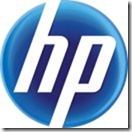Bridging On-Premise and Cloud Storage
 Yesterday, Gladinet Cloud Storage Access Suite (Gladinet Cloud Desktop, Gladinet Cloud Backup, Gladinet CloudAFS) registered over a Million downloads. It is an important milestone, validating the market of bridging On-Premise storage and cloud storage.
Yesterday, Gladinet Cloud Storage Access Suite (Gladinet Cloud Desktop, Gladinet Cloud Backup, Gladinet CloudAFS) registered over a Million downloads. It is an important milestone, validating the market of bridging On-Premise storage and cloud storage.There are several observations we have made from the growing Gladinet user base.
1. Cloud Storage needs Local Access Point
Cloud storage is in the Internet. However, people need easy and practical access from local IT infrastructure. In general, people call this the gateway or the on-ramp to cloud storage. The cloud gateway can be generalized to include desktop client, special backup agent or a central access point like a file server replacement.In Gladinet’s product suites, the desktop client is Gladinet Cloud Desktop; the special backup agent is Gladinet Cloud Backup; the file server replacement is Gladinet CloudAFS. The three products have similar look-and-feel as they fit into a single platform for cloud storage access purpose.
2. Many Cloud Storage Services Co-exist
Since we are still in the early phase of cloud computing movement, there are many different vendors in the fields. There are many different technologies and many different cloud storage protocols too.To name a few big ones in the field, there are Amazon S3, Rackspace Cloud Files, Windows Azure Storage, Google Storage for Developers, OpenStack-based, EMC Atmos-based and many more.
The market is more diversified than we had seen from the OS (such as Windows/Mac/UNIX) or from the mobile industry (iOS/Andriod/Symbian/…). It could be that it is in early development and consolidation will happen later on.
From the ground up, Gladinet has a broad range of cloud storage connectors, provided from a single Gladinet Cloud Access platform. Gladinet supports Amazon, Rackspace, Windows, Google, OpenStack, EMC and many more cloud storage services.
3. Hosted Service Provider Entering Market
Cloud storage service is new and currently dominated by Amazon S3. However, cloud storage service is a subset of hosted service. Many hosted service providers around the world are entering into the market. we have seen companies like AT&T, Peer1, Internap, Korean Telecom started their own cloud storage services.As it stands now, the Hosted Service Providers can buy technologies from EMC, Mezeo or Scality to build the cloud storage service. They can also build the in-house technology from OpenStack – Open Source implementation rooted from the Rackspace Cloud Files.
Gladinet partners with these companies and provides native support for EMC Atmos, OpenStack, Mezeo and Scality. This makes it easy for the hosted service providers to partner with Gladinet to provide an end-to-end solution to the customers, bridging customers’ on-premise IT infrastructure with the Hosted Service Provider’s cloud storage service.
4. Continued Cloud Storage Use Case Development
Earlier (several years ago), there is no cloud storage but there was online backup. Since then cloud storage use case continues to develop from backup to access to sync and more. As our observation, we summarized it as the BASIC (Backup, Access, Sync, Integration/Identity, Control) cloud storage use case.Related Posts
Basic Cloud Storage Use CasesCloud Storage Global Expansion
Cloud Storage APIs & Universal Connectors
Gladinet Cloud Access Solutions for OpenStack



Comments